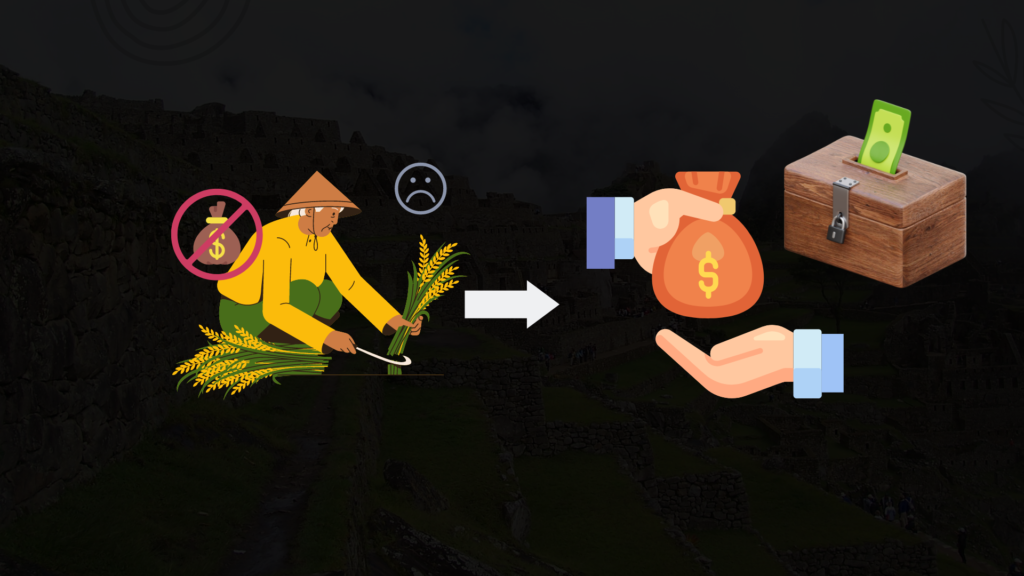Ziraat Bank

Ziraat Bank
Upon adoption of the occidental models in trade and finance by the Ottoman Empire in the first half of the 19th century, foreign banks started operating within the territory of the country. The capital accumulation that is adequate for the establishment of a banking system of a national nature had not formed in the country in that period and presence of national banks as a tool for creating funds could not be spoken of.
The section of the society that suffered from this situation the most was farmers, who made up a large majority of the population; as a large group of farmers having a hard time making ends meet in the agricultural sector, which was completely left to its fate, was in need of loans from private individuals all the time due to lack of a corporate structure, to which they could apply. Creditors were various tradesmen and craftsmen such as tradesmen selling agricultural equipment, wholesalers, exporters, commissioners, middlemen, and convenience store owners, as well as money Lenders who acquired this as a profession. This type of high-interest rate loan from private individuals was called Usurer or Usuary Loans. “State Cases” ( Memleket Sandıkları) were named after wooden cases (“sandık” is the Turkish word for “case”) in which money collected was saved in wooden cases and lent to farmers to be returned during harvest.

The affairs of the cooperatives were managed by 4 cooperative custodians consisting of 2 Muslims and 2 Christians selected by the participant villagers. Journals, in which daily procedures were written down; ledgers, in which all accounts were registered; and ready cash were kept in these wooden cases. Later on, these cases were replaced by primitive cases made from iron by the foremen in the area for security reasons.
Upon entry into effect of the “State Case Regulations” in 1867, state cases went into action all over the Ottoman Empire (Rusçuk, Eski Cuma (cities in Bulgaria), and Nicosia state cases were the first examples), and rendered services successfully for many years.
2/3 of the profit from the cases that remained after deducing expenditures from revenues obtained from credit facility procedures was used in the construction and restoration of publicly available basic requirements in the respective areas the cases were located in such as schools, roads, and bridges. From this aspect, state cases also contributed to the town planning of the country. However, the degeneration observed in the functioning of the state cases in the following years reduced the efficiency thereof. Thinking that it could reduce the negativities by subordinating the cooperatives to the central administration, the government established “Cases for Public Benefits” (Menafi Sandıkları) in 1883 in line with the same purpose. Upon introduction of Cases for Public Benefits; administration was rearranged, recoding and accounting procedures started being carried out in line with modern and scientific standards, and were subjected to direct inspection by the central government. Although this new structuring brought in relatively businesslike functioning that is open to scientific inspection, it could not suppress the need for a completely new and modern organization.

The idea of and tendency to organize the current organization in the form of a bank developed when the facts that the Cases for Public Benefits did not satisfy the needs, a revision was essentially required from the administrative aspect and their resources were limited were added; this issue was thought about in all seriousness by Abdul Hamid II, as well. In the minutes submitted by the Grand Vizier Kamil Pasha to the Cabinet and Abdul Hamid II, the necessity for the abolition of Cases for Public Benefits as they could not function anymore and the establishment of Ziraat Bank instead was written down. Upon entry into force of the minutes in question with the confirmation and approval of Abdul Hamid II; Ziraat Bank, a modern financial institution that would succeed Cases for Public Benefits, was officially established on August 15, 1888, and Cases for Public Benefits were active in that period were transformed into bank branches and went into action. Public benefit shares, which constituted the financial resource for Cases for Public Benefits until that day, were transferred to the bank and the next funds were also allocated to the capital of the bank. A new era of organized agricultural credits in our history was entered into after such step was taken.
Ziraat bank Now :

Ziraat Bank Now was Added to the capital increase gamut of public banks. Ziraat Bank’s capital is increased from TL 21.8 billion to TL 34.9 billion.
According to the information in the bank’s financial results, the entire increase in the bank’s capital has been transferred to Türkiye Varlık Fund Yönetim A.Ş. It was stated that it was decided to raise it to be paid in cash by the company.
It was emphasized that the process regarding the said capital increase continues.
6.29 billion TL net profit from Ziraat in 2021.
Ziraat Bank announced a net profit of 6.29 billion TL in 2021, down 19.6 percent.
According to the statement made by Ziraat Bank to the Public Disclosure Platform, unconsolidated net profit for the period last year was announced as 6 billion 291 million 309 thousand TL. The bank announced a profit of 7 billion 825 million 19 thousand TL in the previous year.
In the unconsolidated financial statements of the Bank as of December 31, 2021, there is a total of 778 billion 403 thousand 889 thousand TL loans, which have a significant share in its assets, and a total of 29 billion 72 million 369 thousand TL expected loan loss provision allocated for them.
Ziraat Bank announced its consolidated profit for the period as 7 billion 918 million 978 thousand TL. Consolidated profit in the previous year was 9 billion 651 million 452 thousand TL.


